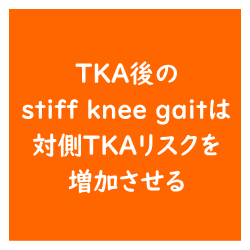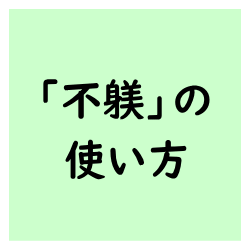目次
杖の使用は膝OAの関節裂隙を狭小化の改善・予防につながるのか?
変形性膝関節症の予防,または変形性膝関節症例における疼痛の改善を目的として,理学療法士・作業療法士がクライアントに杖の使用を進めることは少なくないと思います.
しかしながら杖の使用というのは本当に変形性膝関節症の症状改善や関節裂隙の狭小化の予防に有効なのでしょうか?
今回は杖の使用は内側型変形性膝関節症例の関節裂隙を狭小化の改善・予防につながるのか否かを明らかにした報告を紹介させていただきます.

今回紹介する論文
Osteoarthritis Cartilage. 2019 Sep;27(9):1324-1338. doi: 10.1016/j.joca.2019.05.004. Epub 2019 May 21.
Effect of cane use on bone marrow lesion volume in people with medial tibiofemoral knee osteoarthritis: randomized clinical trial.
Van Ginckel A, Hinman RS, Wrigley TV, Hunter DJ, Marshall CJ, Duryea J, Melo L, Simic M, Kasza J, Robbins SR, Wallis JA, Bennell KL
今回ご紹介いたします論文は2019年に掲載された新しい内容です.
研究の目的
To evaluate effects of daily cane use for 3 months on medial tibiofemoral bone marrow lesion (BML) volumes in people with medial tibiofemoral osteoarthritis (OA).
この研究では3ヶ月間にわたる日常的な杖の使用が内側型変形性膝関節症例の関節裂隙の広さに与える影響を明らかにすることを目的としております.
研究方法
In this randomized controlled trial (RCT), 79 participants with medial tibiofemoral OA were randomized to either a cane group (using a cane whenever walking) or control group (not using any gait aid) for 3 months. The cane group received a single training session by a physiotherapist, using a biofeedback cane to teach optimal technique and body weight support and motor learning principles to facilitate retention of learning. The primary outcome was change in total medial tibiofemoral BML volume (per unit bone volume) measured from magnetic resonance imaging (MRI) at 3 months. Secondary outcomes were BML volumes (per unit bone volume) of the medial tibia and femur, and patient-reported outcomes of overall knee pain, knee pain on walking, physical function, perceived global symptom changes and health-related quality of life. MRI analyses were performed by a blinded assessor.
この研究では無作為化比較試験を用いて,79例の内側型変形性膝関節症例を,3ヶ月間,歩行時に杖を使用する介入群と歩行時に歩行補助具を使用しない対照群に分類しております.
介入群に対しては理学療法士が杖の使用に関して視覚的な技術,荷重サポート,運動学習理論を用いて指導を行っております.
この研究の主要アウトカムは内側膝関節裂隙幅(容積)となっており,介入後3ヶ月の段階でMRIを用いて評価を行っております.
副次的なアウトカムとして患者立脚型評価(全体的な疼痛,歩行時の疼痛,身体機能,QOL)を評価しております.
なおMRIについては盲検化した評価者が評価を行っております.
研究結果
Seventy-eight participants (99%) completed the primary outcome. Mean (standard deviation) daily cane use was 2.3 (1.7) hours over 3 months. No evidence of between-group differences was found for change in total medial tibiofemoral BML volume (mean difference: -0.0010 (95% confidence in
between groups.
79例中78例が主要アウトカムの測定を行っております.
介入群における3ヶ月間の平均的な日常生活における杖の使用時間は2.3時間となっております.
結果としては介入群・対照群間において内側膝関節裂隙の広さに有意差は認めておりません.
また介入群・対照群間における副次的アウトカム(患者立脚型評価)の変化についても有意なものではありませんでした.
研究の考察
Daily use of a cane during walking for 3 months aiming to reduce knee joint loading did not change medial tibiofemoral BML volumes compared to no use of gait aids.
今回の研究結果からは3ヶ月にわたる膝関節への負荷を軽減させる目的での日常的な歩行中の杖の使用は内側型変形性膝関節症例の関節裂隙の狭小化の予防や改善に寄与しないことが明らかとなりました.
今回は杖の使用は内側型変形性膝関節症例の関節裂隙を狭小化の改善・予防につながるのか否かを明らかにした報告を紹介させていただきました.
残念ながら杖を使用しても関節裂隙幅に変化は無いといった結果でありましたが,観察期間が3ヶ月ですのでもう少し長期的にみてみるとどのような変化があるのかが気になります.
関節裂隙の狭小化の予防や改善のみが杖を使用する目的ではないと思いますので,今後はさらに理学療法士・作業療法士の視点で杖の有用性を検討したエビデンスが出てくるとよいですね.







コメント